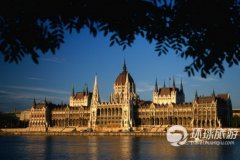French coffee culture French coffee is a slow drink.

The French do not seem to pay attention to the taste, but the environment and atmosphere. Most of them do not want to drink alone behind closed doors, but join in the fun outside, even if the price of a small cup is enough to make a pot at home.
French people drink coffee slowly, taste it carefully, read books and newspapers, talk about it, and "soak" for most of the day. Because of this traditional and unique coffee culture, French coffee resting places can be found all over the streets, under the shade of trees, by the side of the road, by the square, on the riverbank, on cruise ships, on street balconies, and even on the Eiffel Tower. And the form, style, size are not limited to one style, there are coffee shops, restaurants, halls, rooms.
The most popular and romantic ones are those open-air cafes, which are almost a portrayal of French life. Many open-air cafes occupy many public places, such as a corner of the square and sidewalks on the streets, even on the bustling Champs-Elysees, where colorful umbrellas have become a unique street view of Paris. The chairs of the cafe are almost all facing the road, sitting in this intentionally set auditorium, the road in front of which is the big stage where the script will never be repeated.
In addition to those open-air cafes that look up to the sky, there is no shortage of magnificent or simple and elegant cafes in about 170000 cafes in France. Especially in Paris, some cafes are themselves legendary places of interest. In the old dynasty of the Middle Ages, the focus of French cultural life was on the court. In the age of enlightenment in the 18th century, the focus of culture began to shift to various salons, clubs and cafes. The LeProcoPe Cafe in Latin, for example, is associated with the French Revolution that influenced the world more than 200 years ago. Voltaire, Rousseau and Diderot, the thinkers of the 18th century European Enlightenment, as well as Robespierre, Danton and Mara, the three heroes of the Great Revolution, were all regulars here. Several works by Voltaire and Diderot's world's first encyclopedia were written here, as well as the red, white and blue tricolor hats that symbolized the Revolution for the first time.
Important Notice :
前街咖啡 FrontStreet Coffee has moved to new addredd:
FrontStreet Coffee Address: 315,Donghua East Road,GuangZhou
Tel:020 38364473
- Prev

Budapest: a slow Coffee Culture
Budapest has a rich coffee culture, and it is an ancient and modern city with harmonious development. Castle Hill is a missed scenic spot in Budapest. Remember to soak in the extraordinary hot springs here. Budapest Capitol and Danube River Traffic: Budapest's traffic is very developed, in terms of external transportation, the suburbs of Ferihegy International Airport many international
- Next

People in San Francisco tend to use coffee spoons to measure life.
San Francisco is indeed a holiday paradise. The cultural and historical scenery is relaxed and pleasant, the restaurant delicacies are surprising, and the magnificence of the hotel is beyond imagination. There are also all kinds of theatrical performances and sports in the big American cities that tourists expect. Overlooking San Francisco from the air, the city is as neat as a transistor radio: exquisite Victorian buildings, four
Related
- How did the Salvadoran coffee industry develop in Central America?
- What exactly does the golden cup extraction of coffee mean?
- The Origin of Coffee flower
- [2023 Starbucks World Earth Day] there are more meaningful things besides free Starbucks coffee!
- What kind of coffee is there in Spain? 9 Flavors of Spanish Coffee
- Aromatic African coffee| Kenya's coffee culture and historical production area
- Liberica Coffee Bean knowledge: the characteristics of Liberian Coffee beans of the three original species of Coffee beans
- The origin and formula of Spanish latte introduces the taste characteristics of Bombon coffee in Valencia, Spain.
- How to adjust the solution of over-extracted coffee
- What is the tasting period of coffee beans? What is the period of coffee and beans? How should coffee wake up and raise beans?

